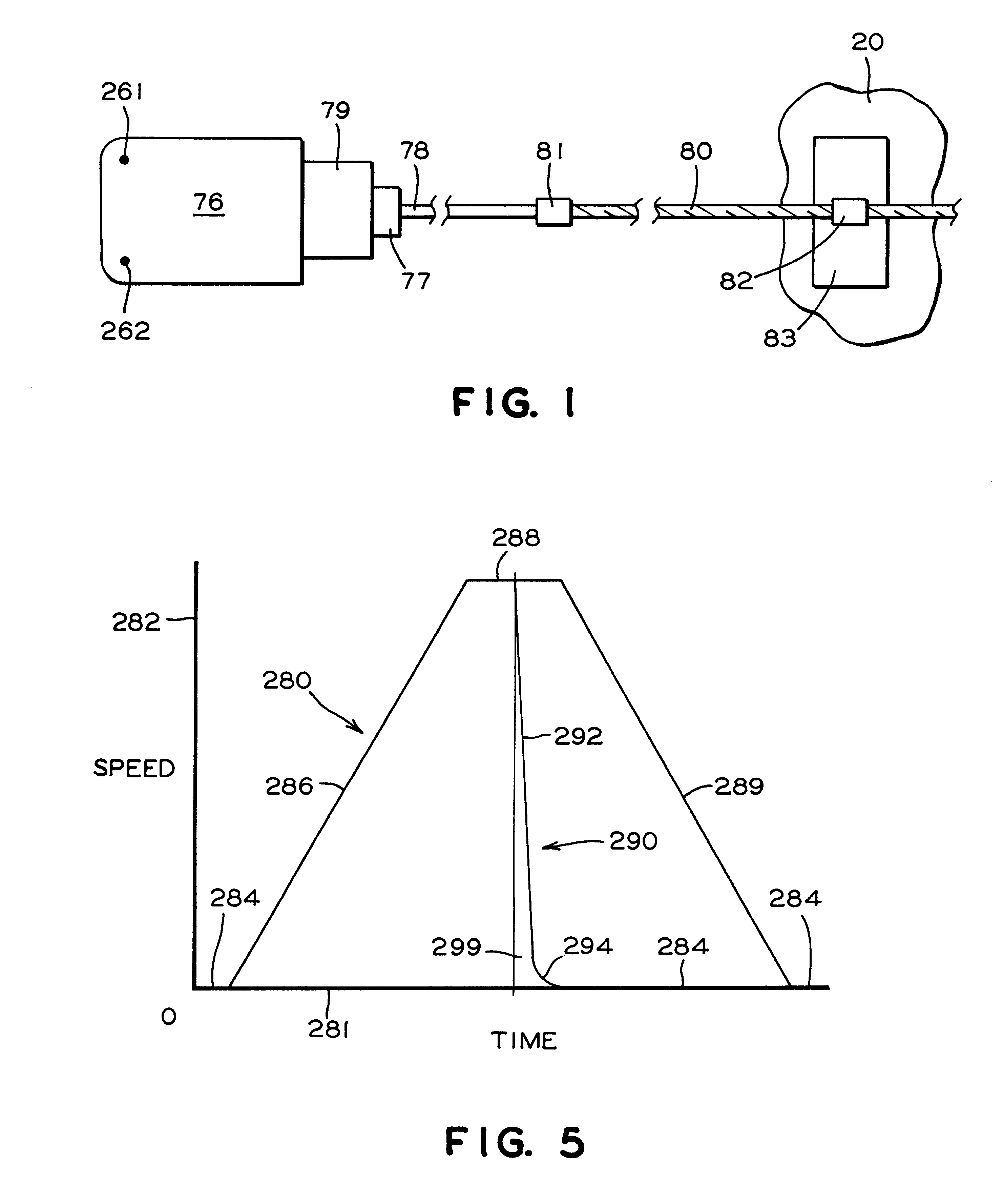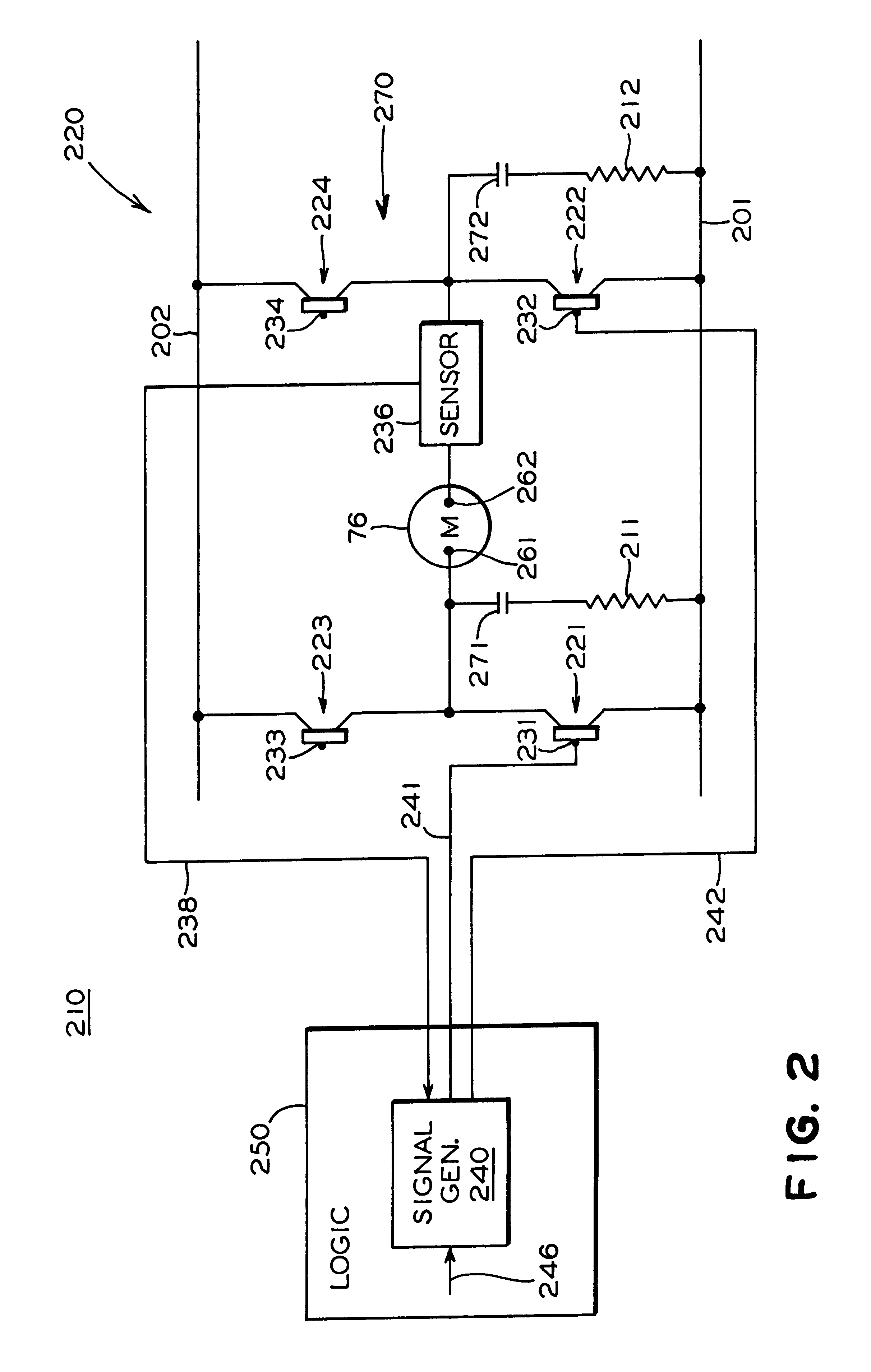Dynamic brake for power door
a technology for power doors and brakes, applied in the direction of dynamo-electric converter control, dc motor speed/torque control, dc motor rotation control, etc., can solve the problems of large doors in such door systems, difficult environment for door systems to operate in, and general requirement for very rapid operation
- Summary
- Abstract
- Description
- Claims
- Application Information
AI Technical Summary
Benefits of technology
Problems solved by technology
Method used
Image
Examples
Embodiment Construction
, particularly, when the detailed description is taken in conjunction with the attached drawing figures and with the appended claims.
FIG. 1 is a mechanical schematic of a power door to which a presently preferred embodiment of the invention is applied;
FIG. 2 is an electrical schematic of a presently preferred embodiment of the dynamic brake of the invention in which a current feedback signal is obtained from a current sensor in series with the motor;
FIG. 3 is an electrical schematic of a presently preferred embodiment of the invention in which a current indicating signal is obtained from a current indicating terminal on a first transistor;
FIG. 4 is an electrical schematic of a presently preferred embodiment of the invention in which a current indicating signal is obtained from a current indicating terminal on a second transistor;
FIG. 5 is a plot of velocity versus time for a power door for a normal closing cycle and for an emergency stop with the dynamic brake of the invention; and
F...
PUM
 Login to View More
Login to View More Abstract
Description
Claims
Application Information
 Login to View More
Login to View More - R&D
- Intellectual Property
- Life Sciences
- Materials
- Tech Scout
- Unparalleled Data Quality
- Higher Quality Content
- 60% Fewer Hallucinations
Browse by: Latest US Patents, China's latest patents, Technical Efficacy Thesaurus, Application Domain, Technology Topic, Popular Technical Reports.
© 2025 PatSnap. All rights reserved.Legal|Privacy policy|Modern Slavery Act Transparency Statement|Sitemap|About US| Contact US: help@patsnap.com



